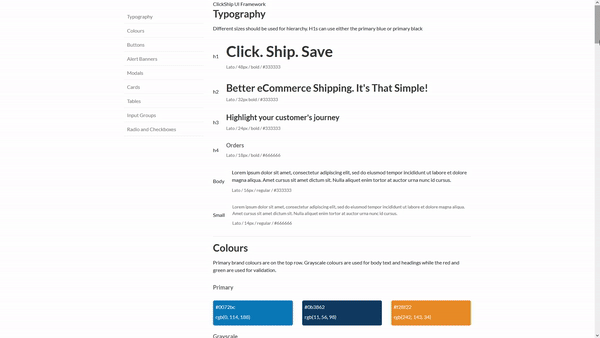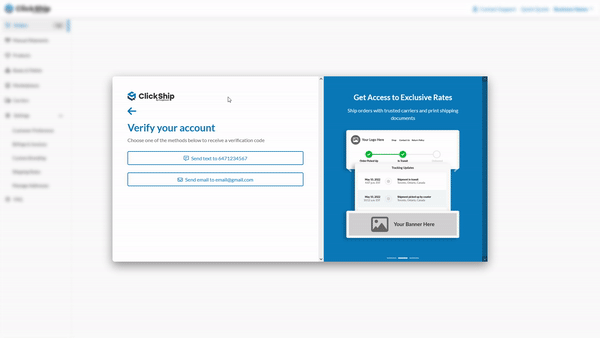ClickShip
Being the lead designer, I was responsible for revamping the brand identity across all UI screens, designing new features, and becoming a product specialist. ClickShip was relevantly brand new and needed a holistic design that was a modern SaaS platform but was friendly for newcomers in the shipping space.
Design Framework
Overhauling all the pages needed to be cohesive and have common elements for developers to use on the fly. Creating a design framework as an internal branding guide was crucial when developers had missing gaps in the design which they could rely on this when certain use cases arose. For example, if there's an alert banner, then use these options or pop-ups for success and error messages.
Customized Branding
Custom Branding allowed users to create their customized email when someone purchased an item from their store. Rather than defaulting to Shopify's email, the user could add their logo and customized message tailored to their brand. This was the extent of the feature, rather simple but over 80% of users were using Custom Branding!
With that knowledge, I proposed we create a premium version where we offer them even more options for customization and their branded tracking page. The idea behind this was to highlight their brand throughout the customer's journey: from the moment they purchase an item, all the way to getting their item delivered to their doorstep.
From checkout, to confirmation email to tracking page.
Onboarding
The problem that we faced for new sign-ups was users completed the onboarding but didn't know what to do after landing on the dashboard. The sales representatives for those customers didn't have any prior information from onboarding to understand why they aren't active users.
After speaking with the sales department about what questions they normally ask when vetting their prospects, we decided to take those questions and bring them over to the new onboarding experience. One: so customers are asked for contextual information about their eCommerce business, and two: that information can be used by the sales representative to further provide solutions tailored to their needs.
During the process, we laid out how many questions are asked during the old onboarding process which came to be around 16 input fields that required to be filled out. With that many questions, that can cause serious friction points for the user.
We decided to streamline the process and ask more personal questions as if a person is having a conversation with you.
A simple way to answer questions
Providing multiple choice questions could quickly be done with dropdowns, but each question would require a click and then a glance at all the options available in that dropdown. Because we ask questions that could have numerous options as answers, displaying all the answers at once where users can click on one (or multiple if applicable) streamlines the process.
Sign Up/Login Page
Asking users about their business and operations
What kind of eCommerce stores do you have?
Finding out how users came across ClickShip as the last step
Complete their profile by providing a goal
Providing multiple choice questions could quickly be done with dropdowns, but each question would require a click and then a glance at all the options available in that dropdown. Because we ask questions that could have numerous options as answers, displaying all the answers at once where users can click on one (or multiple if applicable) streamlines the process.






